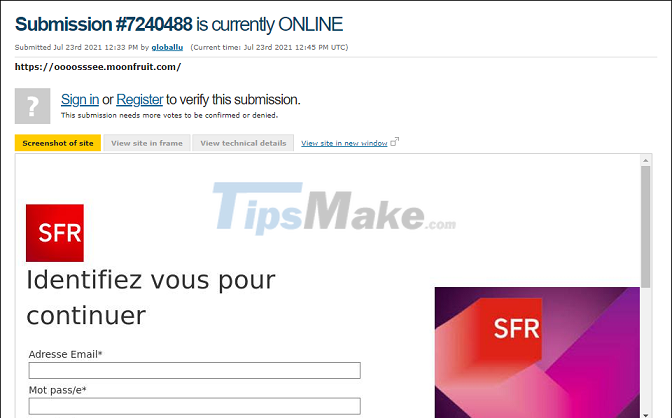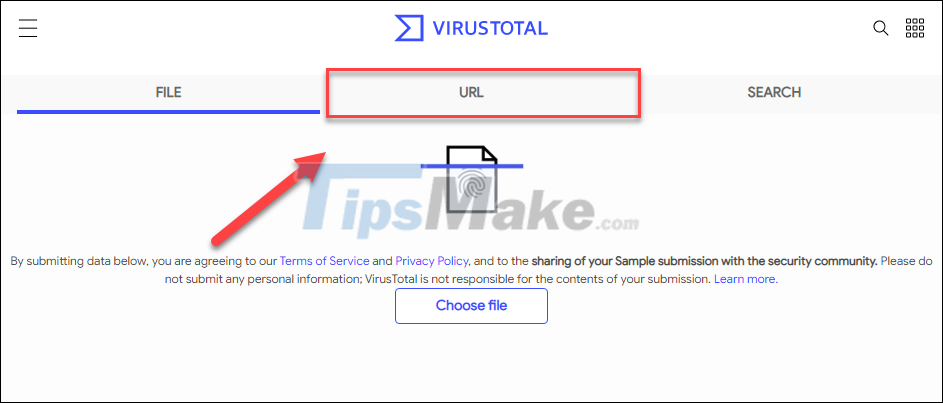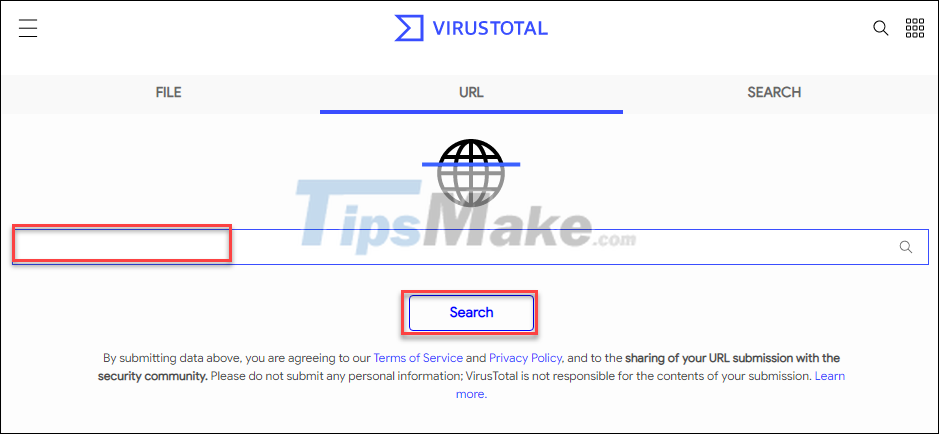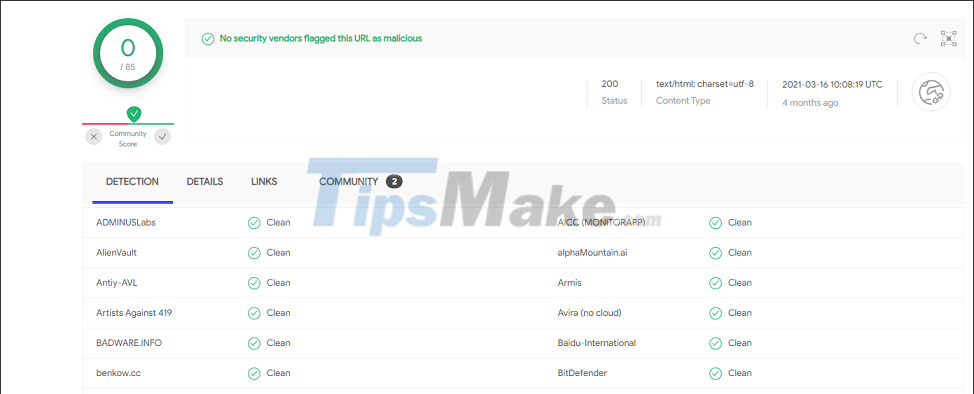How to check if a URL is safe?
If you feel a link is suspicious, check it out now!
1. Using Norton Safe Web
Norton Web Safe analyzes links to detect any security issues, and how it affects you.
Step 1: Visit the Norton Safe Web website.
Step 2: Paste the link you need to check into the search bar and then press Enter.
Norton Safe Web will give the results in a few seconds.
Thus, the link has gone through Norton Safe Web's check and received an OK - Safe result. In addition, you may also get results such as Red - Not Safe, and Orange - Attention.
If a link is rated Orange, it means the site is potentially threatening, but not enough to be considered dangerous. At that time, you can still open the link, but should be careful with the content inside.
Safe Web will provide you with information about the security issues it detects, so you can make timely decisions about whether to access it or not. Safe Web also displays community reviews of the site, which you can reference from them.
2. Google Site Status
By browsing the web through a robot, Google continuously and automatically searches for danger across the entire Internet. The Site Status feature is a means for you to check the safety of a page.
Type the link you want to check in the box and press Enter.
Google will return results related to the state of the page, which is where you'll find hazards, as well as when it was last updated. If the tool detects one of the web is not secure, it will display a warning and detail the danger.
3. PhishTank
PhishTank is a very good measure in detecting signs of fraud.
When you enter a URL that you suspect contains phishing activity, PhishTank will check it. If the link is already in the database, it is a bad link. The data you receive includes screenshots of the page, domain registration information, etc.

Of course, checking for phishing links is not as simple as detecting malware. So you may not get the results you want. But you can also add a website to the tank so that it is responsive after testing.
There are many sites that are not included in Phishtank's index. Phishtank contains only bad pages, it does not save good pages, because they have not been reported by users as 'bad'.
4. VirusTotal
A cross-browser scanning tool, VirusTotal analyzes suspicious files and Urls for malware. The scan results are then shared with the cybersecurity community.
When accessing the website, you first need to switch to the URL section.

Enter the link in the box and click Search.

The tool will give you instant results, if the detections in the Detection section are marked green - Clean, it means the site is safe, no malware detected.

Conclude
Above are 4 websites equivalent to 4 simple ways to check a URL is safe to visit or not. If you suspect a link, don't hesitate to 'check it' right away!
You should read it
- How to scan virus files ZIP, RAR with ZipeZip
- How to scan downloaded files on Firefox
- 3 ways to identify a Mac infected with a virus
- Use EtreCheck to scan, check for errors on your Mac
- How to Check a Download for Viruses
- How to know for sure a safe file before downloading?
- How to fix Facebook catch virus scan, tell the computer to be infected with malware
- How to check Facebook user information and activities
May be interested
- Safe ways to withdraw USB
 many people have a habit of copying data from usb to the computer and then unplugging usb without disconnecting. this can result in data loss or damage, and speed up usb failure. please refer to the following ways to turn off usb to protect your data and usb.
many people have a habit of copying data from usb to the computer and then unplugging usb without disconnecting. this can result in data loss or damage, and speed up usb failure. please refer to the following ways to turn off usb to protect your data and usb. - How to boot into Safe Mode on Mac
 if your mac is having difficulty starting or you are experiencing startup problems, you should start your mac in safe mode to try to identify and resolve the problem. we'll show you how to do it.
if your mac is having difficulty starting or you are experiencing startup problems, you should start your mac in safe mode to try to identify and resolve the problem. we'll show you how to do it. - Start Safe Mode on Windows XP
 with safe mode, your computer does not have to boot to work with windows as usual, but only loads the most basic files, the most essential drivers (by default windows) like the screen driver, desk. keys, mouse, storage device. of course, you will not be able to use the cd-rom, the printer, or you may not be able to connect to the network ... after you boot into safe mode, you may be able to resolve the problem from here. below, we will show you how to start safe mode on your system
with safe mode, your computer does not have to boot to work with windows as usual, but only loads the most basic files, the most essential drivers (by default windows) like the screen driver, desk. keys, mouse, storage device. of course, you will not be able to use the cd-rom, the printer, or you may not be able to connect to the network ... after you boot into safe mode, you may be able to resolve the problem from here. below, we will show you how to start safe mode on your system - Steps to check whether the Firewall on the computer is on or off
 firewall is an important tool to help keep your computer safe in a network environment, check whether the firewall on your computer is on or off by the following 2 simple ways.
firewall is an important tool to help keep your computer safe in a network environment, check whether the firewall on your computer is on or off by the following 2 simple ways. - Check the safety of links, web pages
 someone sent you a link (link). it looks good but is it really safe? whether the sender is a person you know or a stranger, if it's a link you didn't expect, don't rush to click that link.
someone sent you a link (link). it looks good but is it really safe? whether the sender is a person you know or a stranger, if it's a link you didn't expect, don't rush to click that link. - How to access Safe Mode Windows 10 on startup
 there are many ways to enter safe mode on windows 10, in case you cannot access windows and access it. to enter safe mode windows 10 when starting the computer, please refer to the following article of network administrator.
there are many ways to enter safe mode on windows 10, in case you cannot access windows and access it. to enter safe mode windows 10 when starting the computer, please refer to the following article of network administrator. - What is Safe Zone on Instagram?
 if you've ever tried viewing an instagram reel or story but couldn't understand its full meaning because some related content was hidden behind text or buttons, you're not the only one.
if you've ever tried viewing an instagram reel or story but couldn't understand its full meaning because some related content was hidden behind text or buttons, you're not the only one. - How to check the WiFi security connected by Opera VPN
 the situation of stealing information via wifi is increasingly popular, especially when we connect the device to the network without security. however, how can i check if wifi is safe to use?
the situation of stealing information via wifi is increasingly popular, especially when we connect the device to the network without security. however, how can i check if wifi is safe to use? - How to Exit Safe Mode
 this article shows you how to restart your computer, tablet or smartphone normally after opening it in safe mode. in safe mode, your computer, tablet or phone loads only the programs and information needed to run some basic operations, which are helpful in diagnosing problems or removing malicious code. you should only exit safe mode when you are sure that the problem that caused you to use safe mode has been fixed.
this article shows you how to restart your computer, tablet or smartphone normally after opening it in safe mode. in safe mode, your computer, tablet or phone loads only the programs and information needed to run some basic operations, which are helpful in diagnosing problems or removing malicious code. you should only exit safe mode when you are sure that the problem that caused you to use safe mode has been fixed. - Enable Safe Mode in Windows 7
 there are many problems with the operating system when misconfiguring the software or installing the wrong driver, then the job we need to do is to uninstall what has just been done. however, there are many cases of unacceptable errors in the normal desktop. then we can use safe mode to fix this.
there are many problems with the operating system when misconfiguring the software or installing the wrong driver, then the job we need to do is to uninstall what has just been done. however, there are many cases of unacceptable errors in the normal desktop. then we can use safe mode to fix this.










 This is how Windows 11 and Windows 10 21H2 combat PrintNightmare, ransomware and other threats
This is how Windows 11 and Windows 10 21H2 combat PrintNightmare, ransomware and other threats Patches of dangerous vulnerabilities being exploited by hackers contain dangerous holes and then continue to be exploited by hackers
Patches of dangerous vulnerabilities being exploited by hackers contain dangerous holes and then continue to be exploited by hackers Microsoft patches vulnerability in Windows AppX Installer being used to spread Emotet malware
Microsoft patches vulnerability in Windows AppX Installer being used to spread Emotet malware Add File/Folder to the exclusion list in Windows Security
Add File/Folder to the exclusion list in Windows Security Log4Shell zero-day vulnerability discovered, the new nightmare of enterprises
Log4Shell zero-day vulnerability discovered, the new nightmare of enterprises Detecting a serious security flaw on Viber Desktop, users need to update immediately
Detecting a serious security flaw on Viber Desktop, users need to update immediately